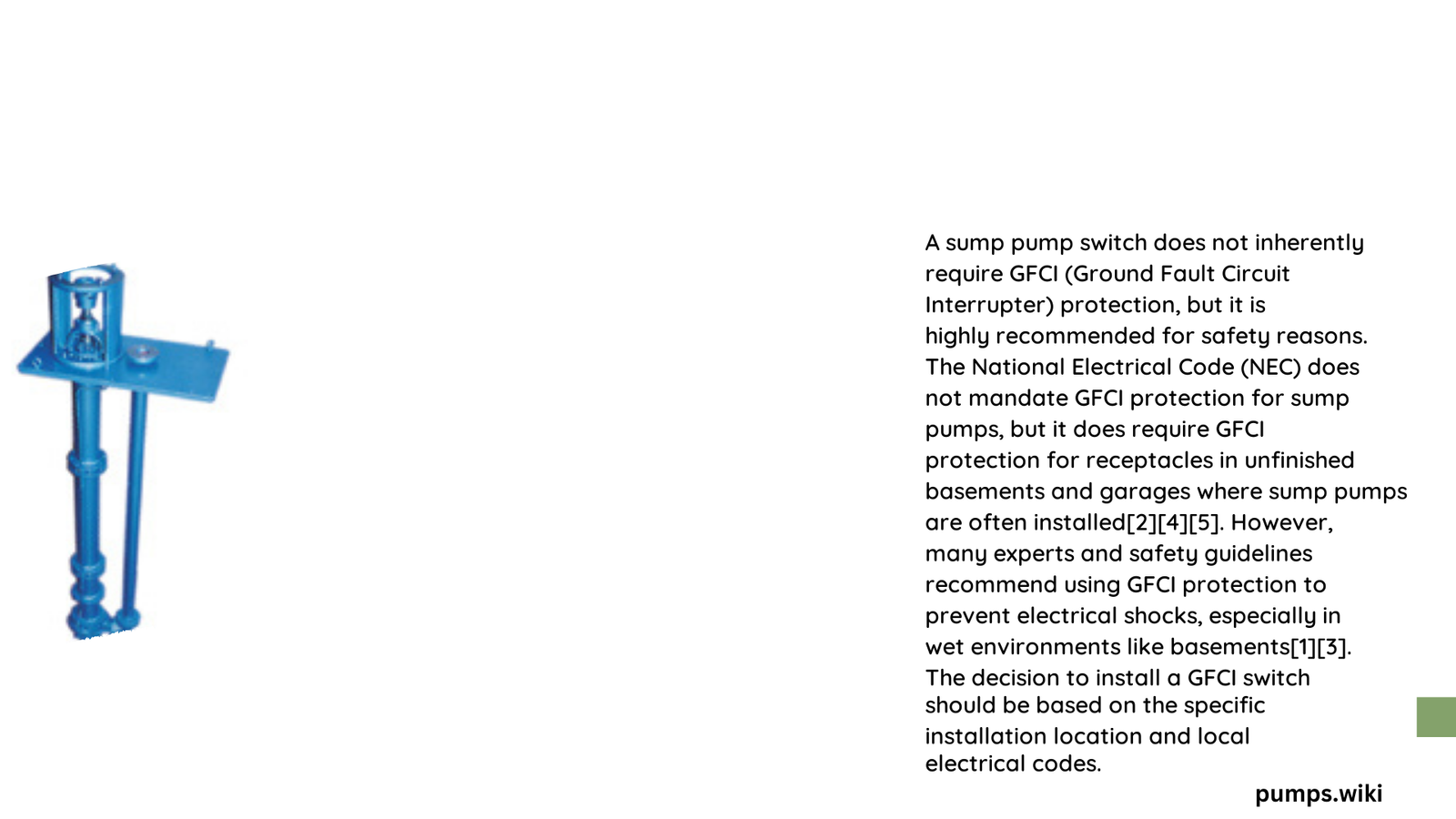A Ground Fault Circuit Interrupter (GFCI) switch is a critical safety component for sump pump installations, designed to protect homeowners from electrical shock in moisture-prone environments. Understanding the relationship between sump pumps and GFI switches involves recognizing their electrical safety mechanisms, installation requirements, and potential challenges in preventing ground fault risks during water management operations.
What Is a Sump Pump Switch GFI?
A sump pump switch GFI represents a specialized electrical safety mechanism that monitors and interrupts electrical current to prevent potential ground fault hazards. Unlike standard switches, GFI switches provide comprehensive protection against electrical leakage in wet basement environments.
Why Do Sump Pumps Require GFI Protection?
Sump pumps operate in moisture-rich environments, making electrical safety paramount. GFI switches offer critical protection by:
- Detecting minute current imbalances
- Preventing potential electrical shock
- Complying with national electrical safety codes
- Protecting homeowners and electrical equipment
How Does a GFI Switch Work with Sump Pumps?
| Component | Function | Safety Mechanism |
|---|---|---|
| GFCI Outlet | Monitor Current Flow | Interrupts Circuit on Fault Detection |
| Sump Pump Switch | Control Pump Operation | Activates/Deactivates Based on Water Level |
| Electrical Circuit | Power Transmission | Provides Dedicated Power Supply |
What Are Common GFI Switch Installation Requirements?
Proper GFI switch installation for sump pumps involves several critical considerations:
- Dedicated Circuit: Use a 120 VAC, 15-20 amp dedicated circuit
- Compliance: Follow National Electrical Code (NEC) guidelines
- Professional Installation: Recommended for complex electrical work
- Regular Testing: Periodic verification of switch functionality
How Can Homeowners Troubleshoot GFI Switch Issues?
Troubleshooting steps include:
- Checking for water intrusion
- Testing GFCI functionality
- Inspecting electrical connections
- Verifying pump and switch compatibility
- Consulting professional electricians for complex problems
What Factors Influence GFI Switch Performance?
Several factors impact GFI switch effectiveness:
- Pump age and condition
- Electrical system integrity
- Water exposure levels
- Quality of initial installation
- Environmental humidity
When Should You Replace a Sump Pump GFI Switch?
Consider replacement when experiencing:
- Frequent circuit tripping
- Visible electrical damage
- Pump performance inconsistencies
- Age-related wear and tear
- Outdated electrical components
Expert Recommendations

Homeowners should prioritize:
– Annual electrical system inspections
– Professional maintenance
– Using high-quality, modern equipment
– Understanding local electrical codes
Potential Risks of Improper GFI Switch Management
Neglecting proper GFI switch maintenance can lead to:
– Electrical shock hazards
– Equipment failure
– Potential property damage
– Compromised personal safety
Conclusion
Understanding the intricate relationship between sump pump switches and GFI protection is crucial for maintaining a safe, functional basement water management system. Regular maintenance, professional consultation, and adherence to safety standards ensure optimal performance and protection.
